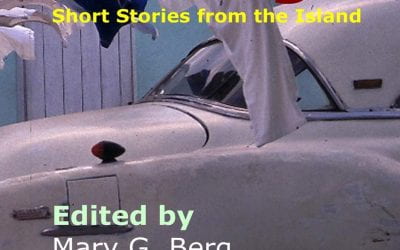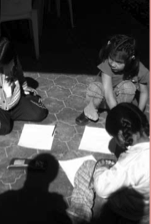Dangers of Insecurity in Postwar Guatemala
Gangs, Electoral Politics and Structural Violence
Though the country’s internal armed conflict ended over a decade ago, Guatemala is an increasingly violent place. The issue of violence permeates everyday conversation. Tabloid newspapers feature images of bullet-ridden cars and bloody corpses each day. Ordinary citizens worry about the gang violence that overwhelms Guatemala City and creeps into rural regions.
In the 2007 presidential election, security emerged as a new buzzword. Leading presidential candidates, including runner-up Otto Pérez Molina, adopted a “tough on crime” platform, portraying themselves—in stump speeches and on roadside billboards—as eager to stamp out violent crime and potentially utilize coercive power in the process.
The winner, Álvaro Colom, ran on a left-center platform that included social programs and promises to end corruption as part of a broader vision of what security means. His party now faces the difficult task of addressing the conditions of structural violence that pervade Guatemalan society, conditions that have been largely ignored in right-wing political discourse, media representations and everyday talk. Crime and gang violence are symptoms of much larger structural problems, including deepening economic inequalities, the erosion of political and social infrastructures and disparate access to healthcare and education, as well as rampant organized crime and corruption. Political and social responses that do not attend to postwar violence as a structural condition but rather as a temporary glitch in the system caused by delinquents, risk compounding rather than ameliorating forms of everyday violence and insecurity.
SYMPTOMS
The 1990s in Guatemala saw the historic signing of the Peace Accords, which ended a 36-year internal armed conflict waged between the state and left-wing rebel groups. The conflict had evolved into state-sponsored genocide directed against the country’s indigenous Maya majority in the rural highlands. The Commission for Historical Clarification reported 200,000 victims of arbitrary execution and forced disappearance, 200,000 refugees, and a million internally displaced people. The postwar era has seen the rise of pan-Maya cultural and political activism and a sharp decline in large-scale military actions. Amidst these changes there has also been famine brought about by droughts and declining coffee prices, the devastation of entire communities by Hurricane Stan in 2005, a resurgence of right-wing political activity, and a sharp increase in street crime and gang violence.
On a national level, the homicide rate nearly doubled from 2001 to 2006, making Guatemala the second most dangerous country in Latin America (after Colombia, where the murder rate is currently falling). Guatemala City, the capital, has become an icon of urban violence. On average, 250 people are murdered each month in the capital alone. The gendered dimensions of the violence are painfully apparent, leading researchers and nongovernmental organizations to label the situation “femicide” (see the article by Victoria Sanford, p. xx). The number of violent crimes has also increased in recent years, including assault, theft, armed robbery, carjacking and rape. Kidnapping for profit is rampant. Armed robbers attack vehicles, especially public buses, on main roads in broad daylight. As anthropologists working in Guatemala, we have heard countless stories from people who have been assaulted on buses and in city streets. People who regularly ride public buses, the only mode of transportation available to most of the population, tell us that they expect to be victimized whenever they travel.
Foreign embassy reports and national media coverage emphasize the prominent role of organized crime, drug trafficking, and gangs. The wide availability of arms in a postwar setting and the demobilization of the military have emboldened armed gangs that control entire neighborhoods in the capital. Yet impunity is the order of the day. According to Amnesty International, only about one percent of violent crimes issuccessfully prosecuted. It is widely and credibly believed that the military and law enforcement agencies are tightly connected with drug traffickers and organized crime; judges and lawyers who work on human rights issues or drug trafficking cases live in constant fear. Politically motivated (and perhaps state-sanctioned) killings continue, as seen in the 1997 assassination of Bishop Juan Gerardi Conedera and campaign-related killings in recent elections. There were 29 killings in the 2003 elections and at least 50 during the 2007 elections, most of the victims local candidates.
GANGS AND ELECTORAL POLITICS
In 1982, General Efraín Ríos Montt staged a coup and took power as head of state for a year and a half. This was the bloodiest period in the country’s armed conflict. Although the Guatemalan Constitution bars former dictators from running for president, Ríos Montt campaigned in 2003, having served as majority leader in the Congress for a decade, on a platform of greater security. Neither legitimate nor successful, his bid nonetheless signaled a new politics of security in Guatemala.
In the latest national election, another former general, Otto Pérez Molina, garnered 47 percent of the vote. Amidst other candidates focused on security issues – one party promised “Seguridad Total” and another “Security, Welfare, Justice” – Pérez Molina’s Patriotic Party stood out with its promise to bring an “iron fist” (mano dura). One of us (Kedron Thomas) spoke with voters leading up to the election and found the seeming paradox of support for the Patriotic Party among a number of Maya who were indeed aware of the role Pérez Molina played during the internal armed conflict. He oversaw military operations in the department of El Quiché, where some of the worst atrocities against indigenous people took place. “We have no other choice,” asserted a 32-year-old Maya woman who works at a hardware store. “As someone who lives in the capital city, I support whichever candidate will clean up the streets and bring security.”
The Patriotic Party’s campaign propaganda encouraged citizens to believe that targeting gangs and delinquents is the key to bringing order. Gangs are often singled out and blamed for many of Guatemala’s problems, as they offer a quick and sensible explanation for violence. For example, in 2004 in Tecpán, a large town about an hour from Guatemala City, a protest against new taxes mandated by structural adjustment policies, in which thousands of Maya farmers participated, turned violent. The town’s mayor was run off and the municipal building burned. Local people quickly attributed the violence to gang members even though, on the ground, the fault lines of who was to blame were blurry. While gang activity is certainly real—some estimates put gang membership higher than that of the national police force—it has also become a handy scapegoat, one actively promoted by politicians.
STRUCTURAL VIOLENCE
Someone assaulted on his or her daily bus commute experiences that violent act as an episode caused by a gang member or otherwise delinquent individual. Yet, to adequately understand such episodes and develop effective social responses, Paul Farmer, a Harvard anthropologist and physician, challenges us to move away from the tendency to pin praise or blame on individual actors and focus on underlying systemic conditions that may not be immediately visible when violence occurs. His concept of “structural violence” describes social arrangements and historical processes that systematically put disadvantaged groups at risk for violence and suffering.
Contemporary violence in Guatemala cannot be adequately understood apart from a number of important historical and societal factors. Against the backdrop of decades of counterinsurgency warfare and embodied memories of trauma and terror, popular support for “iron fist” platforms looks less like categorical support for a new militarized state and more like an understandable desire to no longer live with insecurity. The current predicament of urban violence itself has historical roots. A devastating earthquake in 1976 and Ríos Montt’s scorched earth campaigns of the early 1980s dislocated rural communities and created massive unplanned squatter settlements on the outskirts of the capital. Even today, about one out of every four people in Guatemala City lives in what state authorities define as “precarious settlements.” In slums of squalor housing lacking basic services, gang membership and activity have become ordinary social arrangements.
An enormous underclass experiencing high unemployment in the formal sector has turned to thriving informal economies, often linked to organized crime. Recent neoliberal reforms, which shifted resources away from domestic markets and public programs, have intensified poverty and inequality in Guatemala. According to recent World Bank figures, nearly 60 percent of Guatemalans live below the poverty line and 20 percent live in extreme poverty. The United Nations reports that Guatemala has one of the most unequal income distributions in the world: one fifth of the population controls 60 percent of national income, while the poorest fifth shares just 2 percent of that total. Economic inequality runs together with health and education disparities. Guatemala has the lowest life expectancy and highest infant mortality rates in Central America, while a deplorable public education system yields the hemisphere’s highest illiteracy rate after Haiti.
Political corruption remains a barrier to substantive reforms—Guatemala is the subject of a United Nations Commission against Impunity established in 2007, aimed partly at eradicating organized crime and corruption in the police force and judicial system. Amidst impunity, and in the absence of law enforcement, the employment of private security forces by firms and individuals has exploded. Less affluent segments have resorted to neighborhood watch groups, which eerily recall the armed Civil Auto-Defense Patrols of the war era, in which rural residents were forced to participate in the brutalization of their own communities. Perhaps the most disturbing facet of this impunity context is the use of lynching as a weapon of vigilante justice in highland towns. There were 400 lynching cases between 1996 and 2002, evidence of how violence is dangerously evolving as both problem and solution.
Insecurity is a multifaceted problem. The clustering of endemic poverty and poor health outcomes and the near absence of state services and law enforcement comprises a manifold structural violence felt deeply across Guatemala.
THE DANGERS OF NARROW RESPONSE
As in many other developing countries, or even in the United States for that matter, there is value—political and economic capital—in violence in Guatemala. The media capitalizes on violence by making murder and kidnapping into sensationalized graphic images, obscuring structural conditions in which violence clusters and thrives. Politicians have capitalized on violence by playing to popular fears and promoting a politics of the “iron fist” that, likewise, ignores economic inequalities, societal restructuring and political corruption. For ordinary people, too, violence has value, as when talk about gangs being responsible helps people come to grips with experiences of social instability.
No one denies that Guatemala is a dangerous place. Equally dangerous are patterns of response that have arisen in the postwar period. The “iron fist” seems like a commonsensical approach—militarize the streets and round up the bad guys. Guatemalans are scared and want to live in safe communities. But rather than address root causes of violence, including deepening inequalities linked to structural adjustment policies, the iron fist approach reorganizes violence as something that the state and private security forces can legitimately use to establish a sense of security. Given that such a situation would resemble the long internal armed conflict, Guatemalan voters have demanded a different approach, calling on their newly-elected president to develop solutions to not only achieve security, but also lasting peace.
Kedron Thomas is a Ph.D. Candidate in Anthropology at Harvard University. Her dissertation focuses on international trade agreements, informal economies, and indigenous entrepreneurship in Guatemala.
Peter Benson is Assistant Professor of Anthropology at Washington University in St. Louis and coauthor of Broccoli and Desire: Global Connections and Maya Struggles in Postwar Guatemala (2006, Stanford University Press).
Related Articles
Salvadoran Youth, Transnationalism’s Other Product
English + Español
A completely distraught junior high school teacher in the Washington DC area approached her assistant principal—a highly-educated white middle-class man—one morning for urgent…
Cuba on the Edge: Short Stories from the Island
If you want to read contemporary Cuban fiction and do not have access to the Spanish original, an increasing number of excellent translations will now allow you to become acquainted with…
Making A Difference: Literacy in Calca
Seated on the floor of their school house twenty attentive first grade eyes watch as Martha turns the pages and asks aloud about the fate of David a friendly llama…





